
Wine Culture and Information since 2002 - Volume 22
 Wine Culture and Information since 2002 - Volume 22 |
|
Issue 33, September 2005 |
Contents |
|
|
Tocai Friulano: the Story Goes On |
|
The last May 12th, 2005, the European Court of Justice of Luxembourg has set «as stipulated in 1993 agreement between the European Union and Hungary, the prohibition of using - after March 31st, 2007 - the denomination “Tocai” for some Italian wines». Saved the case there will be further development, the dispute between the historical Tocai Friulano - glorious grape of Friuli Venezia Giulia - and Hungarian Tokaji, is over and the renowned Italian grape was defeated. Nothing could do the historical and well documented evidences which supported the very good Tocai Friulano. The European Court has in fact set «the regulation about homonymy of the examined international agreements do not allow that, in consideration of the Hungarian geographical denomination “Tokaj”, the appellation of the Italian grape variety “Tocai Friulano” cannot be used anymore for the designation and identification of some Italian wines». A verdict leaving few hopes on the future of Tocai Friulano - of course - on its name only. In fact, the excellent grape from Friuli - luckily - will not disappear from our glasses: it will simply arrive with a new name which is not defined at the moment. The verdict - without commenting the decision - however leaves some perplexities, because undeniable and proven historical factors supporting Tocai Friulano were not considered at all and they exclusively wanted to work for the support of geographical denominations, however important and undeniable for sure. The reasons which gave origin to this debate between Hungary and the other countries members of the European Union are well known. Everything originated from the homonymy between the famous Hungarian area of Tokaj, which certainly is mother of excellent and famous wines, and the other denominations that - in a way or another - made use of terms recalling this area. Because of this, in November 1993, the European Community and Hungary signed an agreement in which were set the terms for a mutual safeguarding and control of wine denominations. In order to safeguard the geographical denomination of Tokaj, the agreement stipulated the prohibition of use of the tocai term - as well as any other similar form - from March 2007 on. The agreement was, in particular, about Italian wines produced with Tocai Friulano and the Tokay mentions found in the label of some French wines. The verdict cancels - as a matter of fact - 800 years of history, proven by many documents of the past, in which this grape was mentioned with its usual and historical name. Despite the origin of the name of the glorious grape from Friuli is not completely clear, it is however interesting to known that in the region there is a creek - the Toccai - and from which the renowned grape takes, unnameable for the moment, its name. However there are documents of the Patriarchs of Venice - dated back to the 1200's - in which was mentioned, since those times, the Tocai Friulano grape. There also are other historical evidences about this grape and about Hungary. It is in fact supposed some plants of Tocai Friulano were sent in the thirteenth century from Bertoldo di Andechs - at those times Patriarch of Aquileia - to King Bela IV of Hungary. It is surprising how the verdict of the European Court - even according the many historical evidences - did not consider such a strong and proven past, as to end the dispute between Italy and Hungary with the “elimination” of Tocai Friulano from the labels of wine and from the culture of Friuli Venezia Giulia. While we pay all our respect to the excellent wines from Hungarian Tokaj, we do not believe Tocai Friulano - or in any other name it will be called - needs to take advantage of the historical and noble fame of Tokaj in order to prove its great enological talent. Even because, if we think about Tokaj, the most common and direct association is in favor of the magnificent Aszú - the renowned and charming wine made with grapes affected by Botrytis Cinerea - that is to a type of wine completely different from the ones produced with Tocai Friulano, notoriously used for dry wines. It should however be remembered that in Tokaj are also produced dry table wines, mainly with Furmint grape, totally absent in Italy and having no connection - even genetically - with Tocai Friulano. The homonymy of a geographical area and our white berried grape has been resolved in a court, by imposing the strict rules of bureaucracy to common sense. It seems there will be no extensions or alternatives: within March 2007, Tocai Friulano must change its name. Despite it has not been chosen a new name for this grape having centuries of glorious history - and of excellent wines - there however were many proposals. Among the many proposed names are mentioned Friulano, Toccai (in honor of the homonymous creek flowing in the region) or Tai Friulano (Tai means glass in the local dialect). It is however sad to see this dispute about the exclusive use of a name ended like this and maybe some good sense would have been more appropriate. We would like to remind everyone who insists in using names and show them off like a flag, the words of Juliet said to Romeo in the famous dialogue of the second scene in the second act of William Shakespeare's Romeo and Juliet tragedy. Juliet reminded her beloved Romeo: «What's in a name? What we call a rose, even with any other name would always smell as sweet». With any other name they will decide to call our Tocai Friulano, no one will never succeed in eliminating the prestige and the excellence of this grape and of anything its wines can express in glasses, including its aromas. As everyone knows, men usually need names and titles in order to identify and recognize the dignity of things, including wines and grapes. It is undeniable this verdict will however be cause of many problems and serious consequences for Friuli's producers, which since many years have associated their name with Tocai Friulano. This does mean they will have to work very hard in promoting the new name, as well as trying to have consumers and wine lovers understand it is the very same grape. It will be - for many aspects - like rewriting the history from the beginning and in a such distracted world and frequently attracted by frivolous things and appearance, it will probably not be easy. They will have to work hard on the promotion and spreading of the new name, and this is something Friuli Venezia Giulia's producers and institutions know very well. However this is not a farewell, there will always be Tocai Friulano, this is something we can be certain of. No matter what the name will be, it will be like meeting an old and dear friend who entertained us with his good company. See you soon Tocai Friulano: we are waiting for you in our glasses, to tell us your long and glorious story that - despite men - it will never change its name.
|
||||
MailBox |
|
In this column are published our reader's mail. If you have any comment or any
question or just want to express your opinion about wine, send your letters to
our editorial or fill in
the form available at
our site.
|
| I would like to know more about the service of jug wines. |
| Michele Greco -- Potenza (Italy) |
| The selling of jug wine is a practice which has virtually originated with the “discovery” of wine. Jug wine generally is associated to low quality - and this is usually true - however the best characteristic of these wines is represented by the low cost and therefore they are generally bought as wines to be consumed on a daily basis during meals. The selling of jug wines is usually done by associated and cooperative wineries, and it usually represents a commercial strategy for many private producers. Jug wines are usually bought in large containers, therefore the main problem is represented by oxidization and any possible acescence which could happen because of the increasing quantity of air occurring as the container gets empty. For this reason, it is appropriate to bottle the wine soon after purchase in order to ensure a better condition of preservability. As for service, it is enough to follow the usual recommendations valid for any other wine, therefore there will be chosen the appropriate temperature and glass according to type, structure and other organoleptic qualities of the wine. |
| My wife, who is Italian from Modena, loves the wines of her land and every time she comes back from Italy, she always brings back some bottles of Lambrusco. Could you please suggest us a good matching with this wine? |
| Miguel Raventós -- Madrid (Spain) |
| Lambrusco - although it would be better to say Lambrusco grapes, because of the many existing varieties - is very common in Emilia Romagna and in the province on Mantua, Lombardy. Lambrusco is historically used for the production of vivaci wines - that is slightly sparkling - strongly bound to the tradition and culture of lands in which are being produced. The quality of wines produced with Lambrusco grapes is pretty vast - just like for any other grape, of course - even though many historical wineries are committed with seriousness and passion to quality production and getting excellent results. Because of the notoriety of the grapes in the areas in which it is known, it is pretty frequent to find products with disputable quality. Good Lambrusco is however an agreeable and interesting wine, not only according to a wine-food matching point of view. Its main quality is effervescence and - last but not the least - a good structure and astringency. Lambrusco is generally produced in the secco (dry) and amabile (off dry) styles, the latter being characterized by a slightly sweet taste. The most common matching of Lambrusco, especially the dry style, are zampone and cotechino (two typical dishes from northern Italy), because its joyous effervescence - as well as its appreciable astringency - successfully balance the typical stickiness of these foods. Lambrusco is also good for the matching with pasta, in particular stuffed pasta, as well as some recipes based on meat, such as braised and stewed meats, and it is a perfect companion for cold cuts. Finally, off dry Lambrusco is a very good companion in autumn evenings matched with roasted chestnuts. |
Ribera del DueroLand of red wines, here white wines are almost unknown, Ribera del Duero is capable of expressing excellent quality with intensely concentrated wines, with a full body and among the most longeval of Spain |
|
The Duero - the river originating from Spain and emptying its course in the Atlantic ocean - has a strong connection with wine. In Spain it crosses the wine areas of Ribera del Duero, Rueda and Toro, whereas in Portugal - where its name becomes Douro - entirely crosses the wine areas of Port and Douro. Among the wine areas of Spain in which this river flows, Ribera del Duero certainly is the most important one and here are being produced interesting and renowned red wines, among the most longeval of the country. Frequently, Ribera del Duero wines are considered among the other great red wines of Spain - in particular the ones from Rioja - however the differences are many, including environmental and climatic conditions, even though they share the same grape. In fact, what in Rioja and in the world is known as Tempranillo, in Ribera del Duero is called Tinto Fino - or Tinta del País - and here, just like in Rioja, is the main protagonist in vineyards. It is not by chance in this area are almost being produced red wines: here white wines play a pretty marginal role and are mainly destined to local consumption. Despite Ribera del Duero has been recognized as a quality production area since a little more than twenty years, its history - according to an enological point of view - began almost 150 years ago. It was in 1864 that Don Eloy Lacanda y Chaves - coming back from Bordeaux where he studied enology - planted the first vineyards with the goal of producing wines in the French style. From his journey in France he brought back to Castilla some exemplars of Cabernet Sauvignon, Merlot and Malbec, and he decided to cultivate them - in the vineyards at Valladolid - together with the most typical grape of the area: Tinto Fino, better known as Tempranillo. The result was a wine that - even after more than one hundred years - is still considered among the best wines of Spain as well as - until the 1990's - the best wine of Ribera del Duero. This is how the renowned Vega-Sicilia's “Unico” was born, the wine which boosted Spanish enology to the top of the world and which has a wide number of passionate supporters among wine lovers. Talking about the history of enological quality in Ribera del Duero, it is practically impossible not to mention the important role played by the magnificent wine of Vega-Sicilia, even and in particular in times when in this area were produced pretty ordinary wines only.
The age of some vineyards of Vega-Sicilia, in which are being cultivated Cabernet Sauvignon and Tinto Fino, is of more than one hundred years and their precious grapes still contribute to make the “Unico” wine a great product. Vega-Sicilia's Unico is also one of the most longeval wines of the world and it is rarely commercialized before ten years of aging in cask. In fact, there are no commercial or periodical rules which imposes the release of wines: the choice is uniquely based on wine maker's decisions who allows the wine to age in the cask for all the time he believes to be necessary to make unique the renowned wine of Vega-Sicilia. It is enough to think that in 1991 was released the 1982 vintage together with 1968. Whereas in the former case nine years of aging were considered enough for the wine to be ready, in the latter case they waited even 23 years. The productive strictness of Vega-Sicilia also imposes that in years considered of not sufficiently good quality - usually two or three years in ten years - Unico wine is not produced. From more than one hundred years, the prestige of Vega-Sicilia had no rivals in Ribera del Duero. In 1972, Alejandro Fernández starts, in the neighborings of Pesquera de Duero vintage, his winery. As opposed to Vega-Sicilia, Alejandro Fernández decides to use Tinto Fino only to make his wines. After having harvested the grapes from vineyards - and pressed appropriately - the must is then transferred in casks to ferment - therefore allowed to age - and avoiding any practice of filtering. The result is a deeply concentrated and rich wine, extremely complex. Only after the half of the 1980's his wine was released for the first time on the market: it was a striking success which still today has a number of passionate supporters worldwide. The renowned Tinto Pesquera - this is the name of Alejandro Fernández's wine - is today among the most looked for and appreciated Spanish wines in the world. Pesquera Tinto therefore proved that in Ribera del Duero was possible to make great wines with Tinto Fino grape and - in particular - capable of long period of aging. The wines of Alejandro Fernández and Vega-Sicilia, thanks to their quality, attracted the interest of consumers in Ribera del Duero and other producers began to invest money on the production of wine. It was only in 1982 that Ribera del Duero was recognized by the Spanish quality system as a Denominación de Origen area (Denomination of Origin), abbreviated as DO. From that moment on, everything changed in Ribera del Duero and they tried to abandon the mediocre quality level which characterized the wines for a very long time, excluding the ones of Vega-Sicilia and Alejandro Fernández, of course. Producers began to ensure themselves the help of talented wine makers who made of quality their main goal. Wine began to play a fundamental and important role in the whole area and today Ribera del Duero's wines are being considered among the best ones of Spain. In general terms, the first change happened in the 1980's, however it will be around the half of 1990's - when the wines of the most serious producers were released in the international market - the mediocrity of Ribera del Duero's wines, typical until 1970's, was forgotten.
|
||||||||
|
Ribeira del Duero's wines are classified according to the Spanish enological quality system. Wines of this area are classified as DO (Denominación de Origen) and the production is almost exclusively about red wines. The Ribera del Duero wine area spreads over an area of about 120 square kilometers (about 46 square miles) and mainly located in four districts of Castilla and León region: Burgos (where the largest vineyard acreage is found), Soria, Segovia and Valladolid, the most famous area in which the most renowned wineries are located at. Enological production is almost exclusively about red wines made with Tinto Fino grape, considered as a genetic mutation of the Tempranillo grape known in Rioja. Other red berried grapes of Ribera del Duero include Garnacha Tinta - mainly used for the production of rose wines - Cabernet Sauvignon, Merlot and Malbec. The only white berried grape of the area is Albillo, cultivated in small quantities and from which are being produced white wines typically destined to local consumption. Red wines of Ribera del Duero are classified according to quality of grapes and to aging time, just like in Rioja. The lowest category is represented by tintos joven (young reds), simple wines and with fruity aromas, which are common in the local market and are not exported. The next category is crianza, to which belong wines with at least two years of aging in cask. Crianzas generally have aromas of cherry with a vague hints of “earthy” as well as aromas of vanilla and spices. Reserva wines are produced with superior quality grapes and must have a minimum aging period of three years. Reservas wines are characterized by their full body and full structure, good concentration and better quality than crianzas. The highest category is represented by gran reserva, to which belong wines with a minimum aging period of five years. Gran reservas are wines of great elegance and class in which the long aging allows aromas to have an interesting development and complexity: they represent a very small percentage of all the wine produced in Ribera del Duero. Reserva and gran reserva wines are usually produced in particularly favorable years. The category of quality (crianza, reserva and gran reserva) are always mentioned in the label and are certified by a special seal released by the council for the safeguarding of Ribera del Duero wines.
|
||||
|
Ribera del Duero is located at about 130 kilometers north from Madrid (about 80 miles) - in the Castilla and León region - in a territory of rocky plains crossed by the course of Duero river, that in Portugal is called Douro. Ribera del Duero is a wine region in which are mainly produced reds, however there is also a small production of white and rose wines, mainly destined for local consumption. The best red wines of this area are pretty concentrated, full bodied, with complex aromas, however showing a good balance among the many components. A typical characteristic of Ribera del Duero's red wines is aging that here can also be of more than ten years and far beyond the minimum requirements set by the production disciplinary. Just like in Rioja, for the aging of wines, new casks are rarely used, instead they often are used cask in order to give wine a less aggressive woody and more harmonic character. Just like in Rioja, casks are usually made from American oak. The most typical grape in Ribera del Duero is Tinto Fino - also known as Tinta del País - a genetic mutation of Tempranillo. After centuries of adaptation in the hot plains of Ribera del Duero, Tinto Fino produces more robust and concentrated wines than the Tempranillo known in Rioja. Ribera del Duero's climate is pretty severe, with summertime characterized by high temperatures and wintertime with rigid temperatures, frequently below zero degrees Celsius. Despite these extreme meteorological conditions, Tinto Fino - the most common grape of this area - was successful in perfectly adapting itself therefore allowing Ribera del Duero's wines to reach high enological levels after the “awakening” of the 1980's. Most of the vineyards cultivated in the Ribera del Duero have a pretty old age, frequently older than fifty years and some of them even have an older age. The old age of vineyards gives a lower quantity of grapes, however they have a higher concentration of flavors, one of the good qualities of red wines produced in this area. The condition of the region is partially mitigated by the influence of Duero river, which in summertime contributes to temper the dry and arid climate by increasing humidity, whereas in autumn and springtime contributes to diminish the effects and frequency of frosts. The most renowned wine area of Ribera del Duero - where the most prestigious wineries are found - is near Valladolid, located in the western area of the region. In most of the cases, Ribera del Duero's red wines are produced with 100% Tinto Fino grape, however the adding of other grapes are allowed as well. Albillo - the only white berried grape of the region - is sometimes added to the robust red wines of Ribera del Duero and it is marginally used for the production of white wines exclusively destined to local consumption. Tinto Fino represents about 85% of all the grapes cultivated in Ribera del Duero, whereas the remaining part is represented by Malbec, Cabernet Sauvignon, Merlot and Garnacha Tinta, as well as the white Albillo. Garnacha Tinta is typically used for the production of rose wines, mainly consumed in the local market. The best wines of Ribera del Duero are characterized by a full body, charming smoothness and round tannins because of the long aging in cask, complex aromas of spices, leather and fruit jams.
|
Franciacorta, Champagne and TalentoThree classic examples of quality Italian and French vintage bubbles, reveals their secrets in the frothing glasses of our comparative tasting |
|
Talking about bubbles - in particular about noble bubbles produced with the classic method - the association with great quality wines is obviously foregone. The charm of bubbles - impossible to deny - takes its origin from the long and prestigious tradition of Champagne, when the wines produced in that area became the symbol of nobility, of a refined and elegant life style, as well as representing an expensive product for the elite. By following the French fame, other countries began the production of wines by means of classic method in the hope of getting the same success. Italy, Spain, United States of America, South Africa and Australia are just few examples of countries in which the production of classic method sparkling wines has a relevant importance. The quality of sparkling wines produced in these countries increased to a level as to compete - frequently with the same opportunities - with the most celebrated and renowned wines of Champagne. Despite the production techniques and the grapes used are more or less the same as in Champagne, it is appropriate to remember every area gives its wines its personal character impossible to find elsewhere. Despite this fundamental and important consideration, many wine lovers keep on arguing on which sparkling wine is better, without considering each one of them is unique in its genre. No matter the region of origin, the grapes mainly used for the production of classic method sparkling wines are Chardonnay and Pinot Noir, to which are sometimes added grapes belonging to local traditions as well as other grapes capable of giving the wine its typical character. The same can be said for the production system that, despite it is defined in many ways in the respective disciplinary and according to appropriate adaptations, they are all based on the so called classic method - that is the method of the refermentation in bottle - with variable aging time and that can also be of tens of years.
|
|
The wines selected for this month's comparative tasting are all produced according the method of refermentation in bottle. We will compare three vintage sparkling wines - worth representatives of the respective categories - of which we will try to understand analogies and differences. We decided to compare the king of French bubbles - Champagne - with two interesting and excellent Italian wines - renowned worldwide since many years for the quality they expressed - produced in the northern part of the country: Franciacorta and Talento. In all the three wines are present two of the most classic grapes - in different percentages - used for the production of sparkling wines: Chardonnay and Pinot Noir. Whereas Chardonnay is generally responsible for class, finesse and elegance of wine, Pinot Noir is in charge to give structure, as well as giving its typical organoleptic qualities.
According to an organoleptic point of view, the three selected wines offer interesting characteristics of comparison as well as analogies. The Champagne selected for our comparative tasting is Drappier's Grande Sendrée Brut, produced with 55% of Pinot Noir and 45% of Chardonnay, belonging to the millésime category. As for Franciacorta, we selected Ca' del Bosco's Cuvée Annamaria Clementi, produced with 55% of Chardonnay, 25% of Pinot Blanc and 20% Pinot Noir fermented and aged in barrique for 7 months, then it follows a refermentation and aging in bottle for 5 years and 8 months. The last wine selected for our tasting is Dorigati's Trento Talento Brut Riserva Methius, produced with 60% Chardonnay - of which a small part fermented in barrique - and 40% Pinot Noir, the wine is refermented and aged in bottle for about five years. The selected vintages will be, in all the three cases, the most recent ones. Serving temperature - because of the fact they are vintage wines and therefore it should be better to favor the development of complex aromas - will be of 12°C (53.6°F). As for glasses, the ideal one is represented by the so called classic method sparkling wine technical glass - generally adopted and proposed by the many production consortiums - however it will also be possible to use the classic ISO tasting glass with excellent results.
|
||||||||
|
As the wines have been poured in the respective glasses, we will notice all of them will form an abundant froth that will tend to dissolve in few seconds, just like we would expect from any quality classic method sparkling wine. The next characteristic we are going to examine is perlage, that is the quality, quantity and development of bubbles. On this regard it is appropriate to remember the analysis of perlage in sparkling wines represents a quality factor: the finer and more persistent the bubbles, the better the production techniques. In general terms, bubbles in classic method sparkling wines are finer than the ones produced with the Charmat method, thanks to the production method which allows a slower and more efficient solubilization of carbon dioxide in wine. For this reason, in quality classic method sparkling wines, perlage must always be fine and persistent, with bubbles having a diameter lesser than one millimeter and that will develop for many minutes in a continuous and copious chain moving upwards the surface. By observing the development of the perlage in our wines, we will notice some similarities: quick chains of very fine bubbles moving upwards and then moving towards the edge of the glass. After having observed the perlage, we will continue our evaluation by examining the color of the three wines. The first wine we will examine is Talento Methius. It will be observed an intense straw yellow color - and by tilting the glass over a white surface - there will be noticed straw yellow nuances in the edge of the liquid mass near the opening. Let's now evaluate Franciacorta Annamaria Clementi: its color will be pale golden yellow with evident nuances of straw yellow. We will notice the color is more intense than Methius: it is good to remember Cuvée Annamaria Clementi is aged for a longer period of time. Let's now observe the color of Drappier's Champagne Grande Sendrée. In this wine the color will be more intense than the other two, it will be noticed a brilliant golden yellow color and nuances of golden yellow, absolutely coherent with its type and the long aging in bottle. Finally, the three glasses will be observed side to side: it will be noticed how the color gets a more intense hue according to the aging time in bottle; paler in Methius, deeper in Franciacorta Annamaria Clementi and in Champagne Grande Sendrée.
|
|
The analysis of aromas certainly is one of the most interesting and amazing aspects of vintage classic method sparkling wines. For this reason it is preferable to taste the three wines at a temperature used for young whites, 11°-12°C (52°-54°F). A lower temperature - there is even who serve these wines at 6°C (42°F), destroying in a moment the patient work of time - would favor the persistence and development of perlage that, despite it is pleasing to see, it will never be as amazing as the complex aromas these wines are capable to express. For the same reason, it would be appropriate to avoid a tight flûte glass in favor of a larger one. The first wine we will examine is Dorigati's Talento Methius. By holding the glass still, we will evaluate the opening aromas: there will be perceived aromas of banana and bread crust. Then - after having swirled the glass - a second smell will be done which will allow the perceiving of intense and pleasing aromas of acacia, pineapple, butter, hawthorn, kiwi, yeast, apple, honey, grapefruit, hazelnut, plum, chamomile and, finally, a pleasing hint of vanilla, the prove of Chardonnay's aging in wood. Let's now evaluate Ca' del Bosco's Franciacorta Cuvée Annamaria Clementi aromas. The opening - done without moving the glass - gives intense aromas of bread crust, yeast, banana and acacia. Let's now swirl the glass as to allow a proper wine oxygenation. There will be perceived intense and refined aromas of apricot, pineapple, apple, pear, litchi, grapefruit as well as a pleasing hint of hazelnut. By continuing the olfactory analysis, there will be noticed more complex aromas - because of the effects of the long aging of wine in bottle on its yeast - of butter and honey, as well as a pleasing aroma of vanilla, effect of the fermentation and aging of base wine in barrique for 7 months. This olfactory impact - for many aspects similar to the excellent Methius - is typical in classic method sparkling wines aged for some years in bottle, where complex aromas wonderfully get married with aromas of fruit and flowers typical of the grapes used for the production. The third and last wine of which we will examine aromas is Drappier's Champagne Grande Sendrée Brut. By holding the glass still, there will be perceived intense and pleasing opening aromas such as bread crust, honey and yeast. Let's now swirl the glass in order to favor a proper wine oxygenation, and then let's evaluate aromas. There will be perceived aromas of fruit such as banana, pineapple, apple, litchi and grapefruit as well as a pleasing aroma of orange peel. Moreover, there will be perceived aromas of brioche, butter and praline, as well as a pleasing hint of flint. Pay your attention on the complexity of aromas and their evolution in the glass: a distinctive sign - just like in the other wines - of the patient aging of wine in the bottle on its yeast. The olfactory analysis of the three wines allows the understanding of interesting common factors: in all the three cases are found pleasing aromas of bread crust and yeast, typical in classic method sparkling wines aged for some years in bottle. Even the aromatic sequence of fruit and flowers is similar - although keeping in each case their evident personality - particularly thanks to Chardonnay grape, present in all the three wines.
|
||||
|
The gustatory analysis of the three wines will allow the understanding of some common aspects, typical in classic method sparkling wines aged for some years in bottle. The first wine we will examine is Dorigati's Talento Methius. This excellent Talento will show a balanced crispness and effervescence, intense flavors and - in particular - a very good correspondence of flavors to the aromas perceived to the nose. In particular, it will be noticed the pleasing smoothness of the wine as well as flavors of banana, grapefruit and apple. Finally, it will be examined the alcohol impact of the wine and how it is perfectly balanced by the pleasing crispness. Let's now evaluate Ca' del Bosco's Franciacorta Cuvée Annamaria Clementi. Even in this case it will be perceived a pleasing crispness and a good effervescence, as well as the excellent correspondence of flavors to the aromas perceived to the nose. Even in this wine the smoothness is a pretty evident gustatory quality - thanks to the long aging in bottle - and that gives the wine a remarkable elegance. The long aging in bottle will also give this wine a fuller structure, also supported by the presence of Pinot Noir grape. In the mouth will be perceived - clean and intense - flavors of banana, litchi, apple and pear. Let's now examine Drappier's Champagne Grande Sendrée Brut. Even in this case the attack is clearly crisp and effervescent - well balanced by alcohol - with flavors very correspondence to the aromas perceived to the nose. In this wine will be noticed - in particular - the evident and pleasing smoothness as well as a good structure, in this case fuller than the other two wines. It is good to remember this Champagne is produced with 55% of Pinot Noir which - together with the long aging in bottle - will give the wine a fuller structure. It will also be noticed how in all the three wines - besides the usual crispness and effervescence - is present a pleasing and elegant roundness, generally not found in classic method sparkling wines aged in bottle for few tens of months.
|
|
The final sensations of the three sparkling wines, have in common the long taste-olfactory persistence as to confirm their excellent quality. The finish of Methius leaves in the mouth long flavors of banana, honey, grapefruit, apple and hazelnut, confirming its pleasing and interesting complexity. The finish of Franciacorta Annamaria Clementi will leave long flavors of banana, litchi, pineapple, honey, pear, apple and grapefruit, even in this case, very elegant and with interesting organoleptic complexity. Champagne Grande Sendrée will leave in the mouth long flavors of honey, banana, grapefruit and brioche, all being of remarkable elegance. The evaluation of these three classic methods will allow the understanding of the organoleptic contribution of Chardonnay in all the three wines - in particular the aromatic similarities of fruit and flowers - as well as the contribution of Pinot Noir in structure, also supported by the long aging. Despite analogies - classic method and grapes - it will be noticed how each wine will be different from the others thanks - in particular - to the respective production areas capable of giving the wines an absolutely unique character.
|
Wines of the Month |
|
|
|
Score legend Prices are to be considered as indicative. Prices may vary according to the country or the shop where wines are bought |
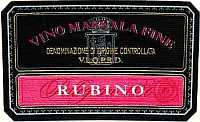
|
|
Marsala Fine Rubino |
|
| Carlo Pellegrino (Italy) | |
| Grapes: Nero d'Avola | |
| Price: € 12.00 | Score: |
| This Marsala shows an intense ruby red color and nuances of garnet red, little transparency. The nose denotes intense, clean, pleasing and refined aromas of black cherry and blackberry followed by aromas blueberry, plum, violet, vanilla, cocoa, licorice and cinnamon. The mouth has good correspondence to the nose, a sweet, hot and slightly tannic attack, pleasing roundness, however balanced, good body, intense flavors, good tannins. The finish is persistent with flavors of blackberry, black cherry and blueberry. This Marsala ages for more than 12 months in oak casks. | |
| Food Match: Chocolate tarts, Fruit jam tarts | |
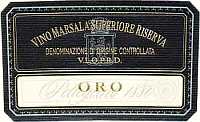
|
|
Marsala Superiore Riserva Oro |
|
| Carlo Pellegrino (Italy) | |
| Grapes: Grillo (70%), Catarratto (30%) | |
| Price: € 15.00 | Score: |
| This Marsala shows a brilliant amber yellow color and nuances of amber yellow, transparent. The nose denotes intense, clean, pleasing and refined aromas that start with hints of almond and dried fig followed by aromas of date, apricot jam, orange marmalade, honey, vanilla, ethereal and caramel. The mouth has good correspondence to the nose, a sweet and hot attack, however balanced, pleasing smoothness, full body, intense flavors. The finish is persistent with flavors of dried fig, honey, almond and date. This Marsala ages for more than 4 years in oak casks. | |
| Food Match: Almond and dried fruit tarts, Hard and piquant cheese | |
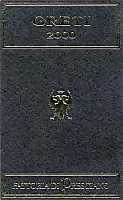
|
|
Greti 1999 |
|
| Fattoria di Presciano (Italy) | |
| Grapes: Sangiovese | |
| Price: € 15.00 | Score: |
| This wine shows a brilliant ruby red color and nuances of garnet red, moderate transparency. The nose reveals intense, clean, pleasing and refined aromas which start with hints of plum and black cherry followed by aromas of blackberry jam, blueberry, dried violet, licorice, tobacco, menthol, cocoa and vanilla. The mouth has good correspondence to the nose, a slightly tannic attack and pleasing smoothness, however balanced by alcohol, good body, intense flavors, good tannins. The finish is persistent with flavors of black cherry, plum and blueberry. Greti ages for 12 months in barrique followed by 8 months of aging in bottle. | |
| Food Match: Roasted meat, Stewed and braised meat, Hard cheese | |
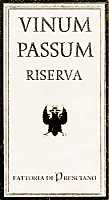
|
|
Colli dell'Etruria Centrale Vin Santo Riserva Vinum Passum 1998 |
|
| Fattoria di Presciano (Italy) | |
| Grapes: Trebbiano Toscano (80%), Malvasia Bianca (15%), Sangiovese (5%) | |
| Price: € 20.50 - 500ml | Score: |
| This wine shows an intense amber yellow color and nuances of amber yellow, transparent. The nose denotes intense, clean, pleasing and refined aromas which start with hints of almond, fig jam and prune followed by aromas of raisin, caramel, honey, peach jam, orange peel, enamel and vanilla. The mouth has good correspondence to the nose, a sweet and smooth attack, however well balanced by alcohol, full body, intense flavors, agreeable. The finish is persistent with flavors of almond, fig jam and caramel. This Vin Santo ages for 4 years in small barrels. | |
| Food Match: Hard and piquant cheese, Almond and dried fruit tarts | |
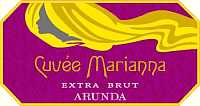
|
|
Alto Adige Talento Extra Brut Cuvée Marianna |
|
| Arunda Vivaldi (Italy) | |
| Grapes: Chardonnay (80%), Pinot Noir (20%) | |
| Price: € 15.50 | Score: |
| This Talento shows a brilliant golden yellow color and nuances of golden yellow, very transparent, good effervescence, fine and persistent perlage. The nose reveals intense, clean, pleasing and refined aromas which start with hints of bread crust, banana and hazelnut followed by aromas of vanilla, hawthorn, grapefruit, butter, jasmine, honey, apple and plum. The mouth has good correspondence to the nose, a crisp and effervescent attack, good smoothness, however balanced, good body, intense flavors. The finish is persistent with flavors of hazelnut, plum and grapefruit. The Chardonnay ages in barrique. This Talento ages on its lees in bottle for 60 months. | |
| Food Match: Roasted fish, Stuffed pasta with mushrooms, Roasted white meat, Stewed fish | |
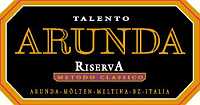
|
|
Alto Adige Talento Extra Brut Riserva Arunda 1998 |
|
| Arunda Vivaldi (Italy) | |
| Grapes: Chardonnay (60%), Pinot Noir (40%) | |
| Price: € 15.50 | Score: |
| This Talento shows a pale golden yellow color and nuances of straw yellow, very transparent, good effervescence, fine and persistent perlage. The nose reveals intense, clean, pleasing and refined aromas which start with hints of bread crust, honey and hazelnut followed by aromas of banana, butter, pineapple, hawthorn, yeast, apple, grapefruit, praline and plum. The mouth has good correspondence to the nose, a crisp and effervescent attack, good roundness, however balances, good body, intense flavors, agreeable. The finish is persistent with flavors of banana, plum and grapefruit. This Talento Reserve ages on its lees in bottle for 70 months. | |
| Food Match: Roasted fish, Fish and mushrooms soups, Braised fish, Roasted white meat | |
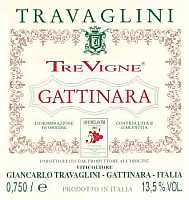
|
|
Gattinara Tre Vigne 1999 |
|
| Travaglini (Italy) | |
| Grapes: Nebbiolo | |
| Price: € 16.50 | Score: |
| This wine shows a brilliant ruby red color and nuances of garnet red, moderate transparency. The nose reveals intense, clean, pleasing, refined and elegant aromas which start with hints of cherry, violet and plum followed by aromas of blueberry, rose, coffee, cinnamon, vanilla, licorice, tobacco, menthol, leather and chocolate. The mouth has good correspondence to the nose, a pleasing crisp attack, slightly tannic and good roundness, however balanced by alcohol, full body, intense flavors, good tannins. The finish is persistent with flavors of cherry and plum. A well made wine. This Gattinara ages for 10-12 months in barrique. | |
| Food Match: Game, Roasted meat, Braised and stewed meat, Hard cheese | |
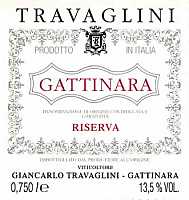
|
|
Gattinara Riserva 1999 |
|
| Travaglini (Italy) | |
| Grapes: Nebbiolo | |
| Price: € 16.00 | Score: |
| This Gattinara shows a brilliant ruby red color and nuances of garnet red, moderate transparency. The nose reveals intense, clean, pleasing, refined and elegant aromas which start with hints of cherry, geranium and violet followed by aromas of raspberry, plum, rose, vanilla, licorice, tobacco, cinnamon, menthol, leather, cocoa and thyme. The mouth has good correspondence to the nose, a slightly tannic attack, pleasing crispness, good roundness, however well balanced by alcohol, full body, intense flavors, good tannins. The finish is very persistent with long flavors of cherry, raspberry and plum. A well made wine. This Gattinara ages for at least 3 years in cask followed by 12 months of aging in bottle. | |
| Food Match: Game, Roasted meat, Braised and stewed meat, Hard cheese | |
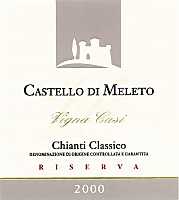
|
|
Chianti Classico Riserva Vigna Casi 2000 |
|
| Castello di Meleto (Italy) | |
| Grapes: Sangiovese (85%), Colorino (5%), Merlot (10%) | |
| Price: € 14.00 | Score: |
| This Chianti shows an intense ruby red color and nuances of garnet red, little transparency. The nose reveals intense, clean, pleasing, refined and elegant aromas which start with hints of black cherry, plum and blackberry followed by aromas of blueberry, violet, licorice, vanilla, tobacco, mace, cocoa and menthol. The mouth has good correspondence to the nose, a slightly tannic attack and pleasing roundness, however balanced by alcohol, good body, intense flavors, good tannins, agreeable. The finish is persistent with flavors of black cherry, plum and blackberry. A well made wine. This Chianti Reserve ages for 18 months in cask followed by 6 months of aging in bottle. | |
| Food Match: Roasted meat, Braised and stewed meat, Hard cheese | |
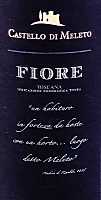
|
|
Fiore 2000 |
|
| Castello di Meleto (Italy) | |
| Grapes: Sangiovese (75%), Merlot (25%) | |
| Price: € 18.00 | Score: |
| The wine shows an intense ruby red color and nuances of garnet red, little transparency. The nose denotes intense, clean, pleasing, refined and elegant aromas that start with hints of black cherry and plum followed by aromas of blackberry, violet, licorice, vanilla, tobacco, cinnamon, chocolate, black pepper and eucalyptus. The mouth has good correspondence to the nose, a slightly tannic attack and good roundness, however well balanced by alcohol, full body, intense flavors, good tannins. The finish is persistent with flavors of black cherry, plum and blackberry. A well made wine. Fiore ages for 12 months in cask followed by 6 months of aging in bottle. | |
| Food Match: Game, Roasted meat, Stewed and braised meat, Hard cheese | |
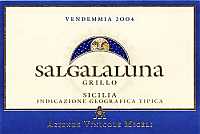
|
|
Salgalaluna 2004 |
|
| Miceli (Italy) | |
| Grapes: Grillo | |
| Price: € 3.50 | Score: |
| The wine shows an intense greenish yellow color and nuances of greenish yellow, very transparent. The nose denotes intense, clean, pleasing and refined aromas which start with hints of pear, peach and hawthorn followed by aromas of pineapple, litchi, almond, apple and plum. The mouth has good correspondence to the nose, a crisp attack and however balanced by alcohol, good body, intense flavors, agreeable. The finish is persistent with flavors of pear, peach and almond. This wine ages for 3-6 months in steel tanks. | |
| Food Match: Fried fish, Pasta and risotto with fish and crustaceans | |
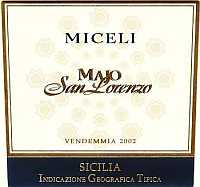
|
|
Majo San Lorenzo 2001 |
|
| Miceli (Italy) | |
| Grapes: Cabernet Sauvignon (50%), Merlot (50%) | |
| Price: € 18.00 | Score: |
| This wine shows an intense ruby red color and nuances of garnet red, little transparent. The nose denotes intense, clean, pleasing and refined aromas which start with hints of black cherry, plum and blueberry followed by aromas of blackberry, vanilla, tobacco, licorice, cocoa, menthol and lavender. The mouth has good correspondence to the nose, a slightly tannic attack, however balanced by alcohol, good body, intense flavors, good tannins, agreeable. The finish is persistent with flavors of black cherry, plum and blueberry. This wine ages for 12 months in barrique followed by 6 months of aging in steel tanks. | |
| Food Match: Roasted meat, Broiled meat and barbecue, Stewed meat, Hard cheese | |
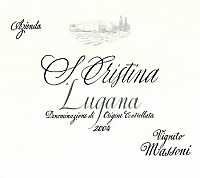
|
|
Lugana Santa Cristina Vigneto Massoni 2004 |
|
| Zenato (Italy) | |
| Grapes: Trebbiano di Lugana | |
| Price: € 15.00 | Score: |
| This wine shows a brilliant greenish yellow color and nuances of greenish yellow, very transparent. The nose denotes intense, clean, pleasing and refined aromas that start with hints of pineapple, pear and peach followed by aromas of citrus fruits, hawthorn, broom, litchi and apple. The mouth has good correspondence to the nose, a crisp attack and however balanced by alcohol, good body, intense flavors, agreeable. The finish is persistent with flavors of pear, pineapple and peach. This Lugana ages for 4-5 months in steel tanks followed by 2-3 months of aging in bottle. | |
| Food Match: Pasta and risotto with fish and crustaceans, Broiled fish | |
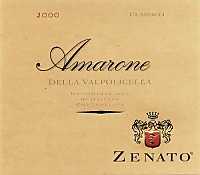
|
|
Amarone della Valpolicella Classico 2000 |
|
| Zenato (Italy) | |
| Grapes: Corvina (80%), Rondinella (10%), Sangiovese (10%) | |
| Price: € 40.00 | Score: |
| The wine shows an intense ruby red color and nuances of garnet red, little transparency. The nose denotes intense, clean, pleasing, refined and elegant aromas which start with hints of blackberry, plum and black cherry followed by aromas of violet, tobacco, licorice, pink pepper, vanilla, cinnamon and cocoa. The mouth has good correspondence to the nose, a tannic attack and however balanced by alcohol, full body, intense flavors, good tannins. The finish is persistent with flavors of blackberry, plum and black cherry. A well made wine. This Amarone ages for 18-24 months in cask followed by 12 months of aging in bottle. | |
| Food Match: Game, Stewed and braised meat, Roasted meat, Hard cheese | |
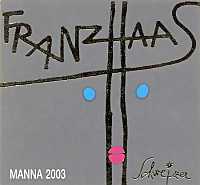
|
|
Manna 2003 |
|
| Franz Haas (Italy) | |
| Grapes: Riesling, Gewürztraminer, Chardonnay, Sauvignon Blanc | |
| Price: € 13.30 | Score: |
| The wine shows a brilliant golden yellow color and nuances of golden yellow, very transparent. The nose denotes intense, clean, pleasing, refined and elegant aromas which start with hints of pear, banana and peach followed by aromas of pineapple, litchi, hawthorn, broom, plum, apple, elder and vanilla. The mouth has good correspondence to the nose, a crisp attack and good smoothness, however balanced by alcohol, good body, intense flavors, agreeable. The finish is persistent with flavors of peach, pear, plum and banana. A well made wine. The Gewürztraminer is from late vintage and Chardonnay ferments in cask. Manna ages for 5-8 months on its lees followed by 4-7 months of aging in bottle. | |
| Food Match: Vegetables soups, Pasta and risotto with vegetables and fish, Sauteed fish and white meat | |
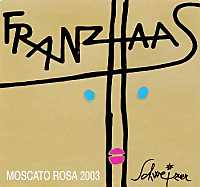
|
|
Alto Adige Moscato Rosa 2003 |
|
| Franz Haas (Italy) | |
| Grapes: Moscato Rosa | |
| Price: € 16.70 - 375ml | Score: |
| The wine shows a brilliant ruby red color and nuances of ruby red, moderate transparency. The nose denotes intense, clean, pleasing, refined and elegant aromas which start with hints of grape, rose and strawberry followed by aromas of geranium, cherry, raspberry, violet, cinnamon, clove and pink pepper. The mouth has good correspondence to the nose, a sweet attack and pleasing crispness, good roundness, however balanced by alcohol, good body, intense flavors, agreeable. The finish is persistent with flavors of cherry, strawberry and raspberry. A well made wine. This Moscato Rosa ages in steel tanks and ages for at least 6 months in bottle. | |
| Food Match: Fruit desserts | |
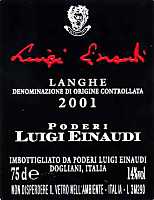
|
|
Langhe Rosso Luigi Einaudi 2001 |
|
| Poderi Luigi Einaudi (Italy) | |
| Grapes: Cabernet Sauvignon, Merlot (60%), Nebbiolo, Barbera (40%) | |
| Price: € 25.00 | Score: |
| The wine shows an intense ruby red color and nuances of ruby red, little transparency. The nose reveals intense, clean, pleasing and refined aromas which start with hints of black cherry, plum and blueberry followed by aromas of violet, blackberry, vanilla, tobacco, cyclamen, licorice, carob and menthol. The mouth has good correspondence to the nose, a tannic attack and however balanced by alcohol, full body, intense flavors, good tannins, agreeable. The finish is persistent with flavors of black cherry, plum and blackberry. A well made wine. This Langhe Rosso ages for 18 months in barrique followed by 6 months of aging in bottle. | |
| Food Match: Game, Roasted meat, Braised and stewed meat, Hard cheese | |

|
|
Barolo Cannubi 2001 |
|
| Poderi Luigi Einaudi (Italy) | |
| Grapes: Nebbiolo | |
| Price: € 50.00 | Score: |
| This Barolo shows a brilliant ruby red color and nuances of garnet red, moderate transparency. The nose reveals intense, clean, pleasing and refined aromas which start with hints of cherry and plum followed by aromas of blueberry, violet, vanilla, licorice, tobacco, mace, pink pepper and menthol. The mouth has good correspondence to the nose, a tannic attack and pleasing crispness, however balanced by alcohol, full body, intense flavors, good tannins. The finish is persistent with flavors of cherry, plum and blueberry. A well made wine. This Barolo ages for 3 years of which 2 years in barrique. | |
| Food Match: Game, Roasted meat, Braised and stewed meat with mushrooms, Hard cheese | |
Carlo Pellegrino's Marsala VergineOne of the main brands which contributed to the history of the great Sicilian wine, has recently released a Marsala aged for more than 40 years, here compared with other two Vergines |
|
Among the great wines which made great the history of Italian enology, Marsala is a wine to certainly be mentioned and, among the wineries which made great the history of this illustrious wine, Carlo Pellegrino - with its 125 years of activity - is among the protagonists. The history of Marsala - after its enological rebirth at the end of the 1700's - represents still today an extraordinary event in the scenery of important Italian wines and, undoubtedly, of the world. Carlo Pellegrino winery - founded in 1880 - has always paid particular attention on the production of this extraordinary wine, becoming the protagonist of a story that, after 125 years, is still found in its wines giving the noses of wine lovers a remarkable aromatic impact. In order to celebrate its centennial activity, Carlo Pellegrino wanted to remember this important goal by creating four new Marsalas and in particular two excellent Marsala Vergine. For the commercialization of the new range of Marsala - destined to restaurants and wine shops - Carlo Pellegrino will use a bottle whose aspect has expressly been designed for this occasion and in order to differentiate the new range from the current one. The new wines include a Marsala Fine Rubino, a Marsala Superiore Riserva Oro and two new Marsala Vergine Vintage, real rarities for every lover of the great Sicilian fortified wine. They are Marsala Vergine Riserva del Centenario 1980 - with 25 years of aging in cask - and Marsala Vergine Riserva 1962, a wonderful wine with 43 years of aging in cask. Because of this exceptional event, the two wines are available in limited quantities, in particular the 1962. These two prestigious wines are supported by the Marsala Vergine Soleras - Carlo Pellegrino is among the very few wineries in Marsala which still use the Soleras y Criaderas system - therefore confirming the historical commitment of the winery to this wine. The availability of these Marsala Vergine has allowed us to evaluate the three wines in a comparative tasting, therefore understanding the organoleptic development only the patient work of time can achieve and that with Marsala is always rich and surprising. After all, good Marsala - just like the three samples of our tasting - is always capable of giving emotions to the senses of every wine lovers who in a wine is always looking for the pleasure of complex, rich, surprising and charming aromas. And on this regard, good Marsala has always been a loyal companion of meditation.
|
||||||||||||||||||||||||||||||||||||||||||
Silvio JermannIn Farra d'Isonzo, in the province of Gorizia, Italy, born the great and renowned wines of Jermann, whites and red, all having the same common factor: an impeccable quality |
|
Vintage Tunina. Who, among wine lovers, has never heard about this renowned white wine, or, even better, has appreciated it? A name - Vintage Tunina - which is among the ones which made the recent history of Italian wines and that contributed to spread its fame in the world. The list of “important” wines could go on with Capo Martino and Were Dreams Have No Ends - which after years of success became “Were Dreams, Now It Is Just Wine!” - and that today is simply “W… Dreams…”, where in the place of dots everyone can use his or her fantasy and add their favorite words. Silvio Jermann likes to complete the name with Where Dreams Can Happen. These are the names of the most famous Silvio Jermann's wines, vintner in Farra d'Isonzo in the territory of Gorizia. Three great white wines. White wines only? Absolutely not. Silvio Jermann's passion gives us red wines as well, excellent red wines, such as Pignacolusse and Mjzzu Blau & Blau.
Everything began in 1881, when Silvio's great grandfather, Antonio Jermann of Austrian origins, moved to Villanova di Farra. The Jermanns first were farmers and then proprietors, when at the beginning of 1900's the wine production became the main business. Today the ancient winery is successfully run by Silvio Jermann, who applied his ideas and his thoughts to wine production and obtained a striking success worldwide. Silvio Jermann attends in 1968 the Enology School of Conegliano, learning the new techniques - at those times considered revolutionary and nonconformists according to the rigid Italian tradition - and that will allow him, in later times, to make great wines. His ideas were in contrast with the ones imposed by tradition which wanted - at those times - fat and heavy wines, therefore he flew to Canada and continued to increase his experience while thinking about that future which will have seen the wine the way he imagined. When he came back, Friuli Venezia Giulia is living a historical change led by other great figures of the region - in particular Mario Schiopetto - and Silvio Jermann finally sees the ideal conditions to impose his thoughts, his modern way to see wine. And it was Mario Schiopetto who encouraged the young Silvio Jermann to continue his wine studies at San Michele all'Adige Institute. It was then the end of alcoholic wines, with deep colors, dull in taste and not very attractive. It was the beginning of a new era for Jermann winery and for Friuli Venezia Giulia: less colored wines but richer in aromas and flavors, with a more modern taste and with a more evident personality, in other words, wines capable of attracting the soul of people. These are Silvio Jermann's wines, that after many years, still represent the excellence of Italian enology in the world. In particular, the excellent and celebrated “Vintage Tunina”, a masterpiece of impeccable and rare class, a brilliant example of how a great white wine can also be produced without using any cask or barrique. In fact, Vintage Tunina ferments and ages in steel tanks, longly in contact with its yeast. Vintage Tunina is a great marriage of international grapes - Chardonnay and Sauvignon Blanc - with the great and precious grapes of the region: Ribolla Gialla, Malvasia Istriana and the rare Picolit. The first tasting tests are dated back to 1973 and it was commercialized for the first time in 1975. Vintage Tunina is a real grape blend - that is grapes are all vinified together - with very low yields of 40-60 quintals per hectare. The name Tunina originated from the old proprietor of the territory where the original vineyard was located - Antonia, which becomes Tunina in the local dialect - the poorest of Casanova's lovers and who worked in Venice as a house keeper. Today Vintage Tunina confirms - year after year - its great excellency and its fame: a great wine for which was written a lot and, we can be certain of this, a lot more will be written. The same is also true for the other Silvio Jermann's white wines, all being of excellent quality and elegance. In particular the current “W… Dreams…”, evolution of that renowned wine born in 1987 with the name Where the Dreams Have No Ends and dedicated to U2's album “The Joshua Tree” and in particular to the “Where the Streets Have No Name” song. Mainly produced with Chardonnay aged in small barrels, this is also a wine which contributed to boost Silvio Jermann to the top of enology. The same also happened for the more “recent” Capo Martino - produced for the first time in 1991 in occasion of the 110 years of activity of Jermann family at Villanova di Farra - made from dried Tocai Friulano grape and Ribolla Gialla, the two great whites of Friuli Venezia Giulia. Capo Martino ages for 11 months in cask followed by 7 months of aging in bottle: an excellent result which collected many successes and appreciation everywhere in the world. The wonders of Silvio Jermann winery are not represented by white wines only. Surprises also come from red wines, two excellent examples of class and elegance. The first one is Pignacolusse, curious name derived from Pigna (Italian for pine cone) - that is from Pignolo grape used for its production - and Colusse, name of the vineyard. Pignolo - an autochthonous grape of Friuli Venezia Giulia - was destined to extinction, fortunately revaluated by the wineries of the region, has in this wine one of the most representative examples, therefore confirming its extraordinary qualities. The other red from Silvio Jermann is Mjzzu Blau & Blau, mainly produced with Blaufränkisch grape and a small part of Pinot Noir. Silvio Jermann remembers that when he was a kid he heard his grandfather talking about a vineyard of Blaufränkisch. After many years he decided to plant again this grape variety, as a tribute to the mitteleuropean origins of the Jermann family. The wine was dedicated to Sylvia Tunina - Silvio Jermann's daughter - who was born the same day in which Vintage Tunina was awarded as the best Italian white wine.
|
||||||||||||
|
Score legend Prices are to be considered as indicative. Prices may vary according to the country or the shop where wines are bought |
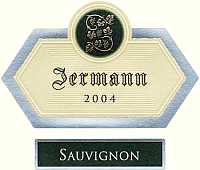
|
|
Sauvignon 2004 |
|
| Jermann (Italy) | |
| Grapes: Sauvignon Blanc | |
| Price: € 15.00 | Score: |
| The wine shows a brilliant greenish yellow color and nuances of greenish yellow, very transparent. The nose denotes intense, clean, pleasing and refined aromas which start with hints of peach, elder and bell pepper followed by aromas of acacia, broom, pineapple, litchi, pear and hints of mineral. The mouth has good correspondence to the nose, a crisp attack and however balanced by alcohol, good body, intense flavors. The finish is persistent with flavors of peach, litchi and pineapple. This Sauvignon Blanc ages in steel tanks. | |
| Food Match: Pasta and risotto with fish and crustaceans, Sauteed fish and crustaceans | |
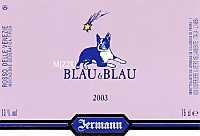
|
|
Mjzzu Blau & Blau 2003 |
|
| Jermann (Italy) | |
| Grapes: Blaufränkisch (90%), Pinot Noir (10%) | |
| Price: € 20.00 | Score: |
| The wine shows a brilliant ruby red color and nuances of garnet red, little transparency. The nose reveals intense clean, pleasing and refined aromas which start with hints of black cherry and plum followed by aromas of blueberry, violet, vanilla, tobacco, licorice, cocoa, eucalyptus, clove and mace. The mouth has good correspondence to the nose, a slightly tannic attack and good roundness, however balanced by alcohol, good body, intense flavors, good tannins. The finish is persistent with flavors of black cherry, blueberry and plum. This wine ages for 16 months in barrique. | |
| Food Match: Roasted meat, Broiled meat, Stewed meat with mushrooms | |
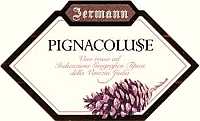
|
|
Pignacolusse 2002 |
|
| Jermann (Italy) | |
| Grapes: Pignolo | |
| Price: € 28.00 | Score: |
| This wine shows an intense ruby red color and nuances of garnet red, little transparency. The nose reveals personality with intense, clean, pleasing, refined and elegant aromas which start with hints of blackberry and black cherry followed by aromas of plum, violet, pine, vanilla, licorice, tobacco, cinnamon, cocoa, mace and wet earth. The mouth has good correspondence to the nose, a tannic attack and however balanced by alcohol, full body, intense flavors, good tannins, agreeable. The finish is persistent with flavors of blackberry, plum and black cherry. A well made wine. Pignacolusse ages for 18-24 months in barrique. | |
| Food Match: Roasted meat, Game, Braised and stewed meat, Hard cheese | |
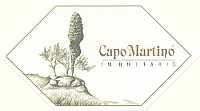
|
|
Capo Martino in Ruttaris 2003 |
|
| Jermann (Italy) | |
| Grapes: Tocai Friulano, Ribolla Gialla, Malvasia Istriana, Picolit | |
| Price: € 38.00 | Score: |
| This wine shows a brilliant golden yellow color and nuances of golden yellow, very transparent. The nose reveals intense, clean, pleasing, refined and elegant aromas which start with hints of apple, hazelnut and toasted followed by aromas of hawthorn, banana, broom, almond, honey, plum, grapefruit, pear and vanilla. The mouth has good correspondence to the nose, a crisp attack and good roundness, however balanced by alcohol, good body, intense flavors, agreeable. The finish is persistent with flavors of plum, pear, hazelnut and grapefruit. A well made wine. Capo Martino ages for 11 months in cask followed by 7 months of aging in bottle. | |
| Food Match: Roasted fish, Stuffed pasta, Stewed fish, Roasted white meat | |
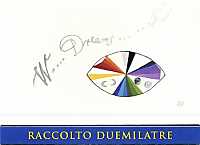
|
|
Were Dreams, Now It Is Just Wine! 2003 |
|
| Jermann (Italy) | |
| Grapes: Chardonnay | |
| Price: € 35.00 | Score: |
| This wine shows a brilliant golden yellow color and nuances of golden yellow, very transparent. The nose reveals intense, clean, pleasing, refined and elegant aromas which start with hints toasted, banana and plum followed by aromas of pineapple, acacia, citrus fruits, hawthorn, apple, honey, hazelnut, grapefruit, praline, vanilla and hints of mineral. The mouth has very good correspondence to the nose, a crisp attack and good smoothness, however well balanced by alcohol, good body, intense flavors, agreeable. The finish is very persistent with long flavors of banana, hazelnut, plum and grapefruit. A very well made wine. This wine ages for 11 months in cask. | |
| Food Match: Roasted fish, Roasted white meat, Stuffed pasta with mushrooms, Stewed fish | |
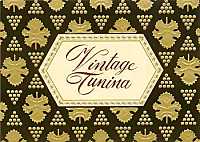
|
|
Vintage Tunina 2003 |
|
| Jermann (Italy) | |
| Grapes: Sauvignon Blanc, Chardonnay, Ribolla Gialla, Malvasia Istriana, Picolit | |
| Price: € 35.00 | Score: |
| Vintage Tunina shows a brilliant golden yellow color and nuances of straw yellow, very transparent. The nose reveals intense, clean, pleasing, refined and elegant aromas which start with hints of peach, pear and plum followed by aromas of banana, pineapple, hawthorn, anise, broom, honey, sage, elder, grapefruit, apple and citrus fruits. The mouth has good correspondence to the nose, a crisp attack and good roundness, however well balanced by alcohol, good body, intense flavors, agreeable. The finish is very persistent with long flavors of plum, peach and pear. A very well made wine. Vintage Tunina ages in steel tanks. | |
| Food Match: Roasted fish, Stewed fish, Stuffed pasta with mushrooms, Roasted white meat | |
| Jermann - Via Monte Fortino, 21 - 34070 Villanova di Farra, Gorizia (Italy) - Tel. +39 481 888080 Fax. +39 481 888512 - Winemaker: Silvio Jermann - Established: 1881 - Production: 650.000 bottles - E-Mail: info@jermann.it - WEB: www.jermann.it |
Cellar Journal |
|
This section is reserved to wine producers who want to publish news and information about their business, to announce new products or just for communicating to customers information and promotions about their products and activity. Send news to be published to our e-mail address.
|
News |
|
In this section are published news and information about events concerning the world of wine and food. Whoever is interested in publishing this kind of information can send us a mail to our address.
|
Matching Wine and PastaThe most classic dish of Italian cooking, thanks to its endless ways of preparation and condiment, allows the realization of excellent matchings |
|
When talking about Italian cooking and when asking about thinking of the main dish, the association with pasta certainly is obvious and easy. Despite the use of cereals flours for the production of pasta, as well as flours produced from other plants, is common in some cultures and traditions of the world - it is enough, for example, to think about the millenary cooking tradition of China - it is in Italy pasta finds its main culinary expression. Pasta can be obtained from flours of different origins - such as wheat, rice and soybean - however, in the Italian tradition pasta is mainly produced with wheat flour. Even tough pasta apparently seems to be a simple food, according to a culinary point of view - and therefore to anything concerning the matching with wine as well - this renowned Italian food has an incredible versatility and can be used for the preparation of endless recipes. Thanks to its versatility in cooking, pasta is in fact used in hundreds different ways, different cooking techniques and condiments in which - apparently - the only limit seems to be represented by fantasy only. Whether it is true fantasy allows pasta to get its endless shapes, taste and colors, its preparation requires skill and attention in order to obtain an impeccable and tasty result. Pasta is so common and spread in Italy that every region, frequently every city, has its typical recipes in which pasta - in its endless ways - gets married to the typical ingredients and foods of every place: a bound which is repeated since centuries and which is strongly associated to local cultures and traditions. The notoriety of pasta - and of its countless and tasty recipes - has gone beyond Italian borders and arrived in other countries of the world therefore getting new shapes and being protagonist of new recipes, frequently adaptation of famous Italian preparations.
The most renowned type of pasta - not only in Italy but also in the world - certainly is spaghetti, with its typical shape recalling a “spago” (Italian for string), from which takes its name. Indeed, pasta is produced in different shapes and sizes in order to exalt specific culinary preparations as well as to keep the rich sauces with which is being seasoned. Every region exalts and uses its own typical shapes of pasta, therefore it is pretty impossible to give a complete and exhaustive list of the many existing specialties. Moreover, fantasy of pasta makers - who continuously invent new shapes, although frequently for commercial reasons instead of culinary ones - makes the creation of a complete list even harder. Pasta is not simply defined for its shape: a fundamental factor is represented by the type of flour used and the way it is being produced. In Italy pasta is mainly produced with wheat flour (Triticum Vulgaris), usually kneaded with eggs or water, and with durum wheat flour (Triticum Durum), generally kneaded with water.
|
||||||||
|
Pasta is generically classified in long and short according to shape. It is defined as long the pasta having a long and thin shape - such as, for example, spaghetti, tagliatelle, linguine and fettuccine - whereas belong to the generic category short all the pasta having a size of few centimeters, such as rigatoni, fusilli and penne. Fantasy of pasta makers, which in the course of centuries created different shapes, has however made this classification pretty limited. In fact, there are types of pasta whose shape is hardly classifiable in one or the other category, most of the times bizarre shapes created for commercial purposes only. The shape of pasta - as well as the way it is drawn - represents a factor of primary importance for the preparation of recipes. As the pasta is always seasoned with sauces of different consistencies and fluidities, the capacity of keeping the condiment - and therefore to obtain a satisfactory result according to an organoleptic point of view - is largely determined by the shape. In general terms, there are two characteristics allowing short pasta to keep the sauce: hollow shapes, where the sauce can deposit and gather, and holes - of variable diameter - going all the way long of pasta, and in which the sauce can penetrate. Even in long pasta can be found holes, such as in bucatini or ziti, in order to favor the penetration of the sauce as to give more taste. No matter the type, drawing - that is the technique used to give the dough its final shape - it is of fundamental importance. In fact, according to the material used for the construction of the draw-plate, pasta gets a more or less accentuated roughness. The pasta drawn in bronze draw-plates gets a higher roughness, as well as a more opaque aspect, whereas the one drawn in teflon or steel draw-plates, tends to get a higher shininess and a pretty smooth aspect. Therefore, the higher the roughness of pasta, the higher the capacity of keeping the sauce. Not all the types of pasta are being produced by means of a drawing process. In the homemade preparation - and sometimes in the industrial process as well - the dough is progressively thinned with a rolling-pin in order to obtain a sheet. This sheet is then folded many times and cut with a knife in order to obtain the so called flat long pasta - such as tagliatelle, taglierini and fettuccine - as well as in rectangular shapes for the preparation of lasagna and cannelloni, or in irregular lozenges for the preparation of maltagliati. Even in this case, fantasy can be used to obtain pasta with countless shapes. In many areas of Italy, notably in the regions of southern Italy, it is used the so called chitarra (Italian for guitar), a particular tool made of many wires, and with which are being obtained the famous spaghetti alla chitarra with the classic square section. Giving a complete list of all the types of pasta, because of its high versatility, is a pretty hard job and with unavoidable reductive results. Versatility of pasta is not limited by its virtually endless shapes. In fact, to the dough - besides flour, water and eggs - can be added other ingredients in order to modify both the color and the taste. Tomatoes, spinach, truffle, hot pepper, spices, cheese and any other ingredient suggested by fantasy - properly reduced in the form of sauce or ground - can be added to the dough which will be subsequently drawn or processed according to the desired shape. Among the most classic and renowned examples of special pasta are mentioned the so called paglia e fieno (literally, straw and hay), tagliatelle produced with two different dough and of which one enriched with boiled and mashed spinach. Special pasta, besides the visual effect produced by the color of the added ingredient, must be carefully considered according to its organoleptic qualities - in particular in all the cases in which the added ingredient is characterized by strong flavors and aromas - as this aspect will influence the choice of the wine to be matched. An important category is represented by stuffed pasta, such as ravioli, tortellini, cappelletti and agnolotti. Stuffed pasta is being generally obtained from a sheet - properly cut according to the type - and then stuffed with tasty fillings produced with many ingredients, usually according to the many regional traditions of Italy. Meat, fish, mushrooms, potatoes, pumpkin, cheese and bread, are some of the ingredients used for the preparation of stuffed pasta. Even some types of short pasta, such as rigatoni and maccheroni, can be stuffed with different fillings. A specific case is represented by lasagna - renowned everywhere in the world - in which boiled rectangles of sheet are layered in a baking-tin and alternated with a rich and thick sauce. In stuffed pasta is extremely important to know the composition of the filling used for stuffing because - together with the condiment - it will represent a fundamental factor for the choice of the wine to be matched.
|
||||
|
Despite the recipe and the sauces used for the preparation of pasta, a fundamental factor, in order to obtain an excellent result and a better appreciation, is represented by cooking. Without considering any possible personal taste, the best way to cook pasta is al dente (literally, “tooth style”) . For a good al dente cooking, it is necessary to consider the quality and the type of pasta, factors which will help in determining the time. Although al dente cooking is a pretty subjective concept for which everyone has his or her preference, in general terms al dente cooking is obtained when pasta, during chewing, has a certain consistency and “hardness”, as to however define it cooked and not raw. To be avoided is the excessive cooking, both because it makes pasta less digestible, as well as for the fact it loses taste and freshness. It should also be remembered fresh pasta - that is the one prepared at home or by artisan pasta makers - requires a shorter cooking time than dry pasta, that is the one generally produced by industrial pasta makers. As a general rule, for a good cooking it is advisable to use at least one liter of water for each 100 grams of pasta. A greater quantity of water gives better results, as it avoids pasta to stick and favors the opening of long shaped pasta. Use a pot with a height greater than its diameter and with a volume enough to avoid any spilling of water during boiling. Wait for the water to boil, then add salt for a quantity of 10 grams for each liter. Before throwing pasta in the pot, it is advisable to wait for the salt to be completely melted and for the water to resume boiling. Pasta must be thrown in the pot all at once, occasionally stirring with a fork in order to avoid pasta to stick to the pot and to allow its opening. As soon as pasta is cooked al dente, pour a glass of cold water in the pot: this little trick will stop the cooking while keeping pasta perfectly al dente. Drain pasta while paying attention to leave it a little wet and not dry. Add pasta to the sauce: it is now a advisable to saute it on the pot - or to mix it with a wooden spoon - over the fire: this procedure is very important because it allows the pasta to absorb the condiment and makes it more tasty.
|
|
The choice of a wine for the matching with pasta is mainly determined by sauces and condiments as well as the cooking techniques. According to an organoleptic point of view, pasta - with no condiment or sauce - has a basically sweet taste because of the high contents of starch. This organoleptic quality, in order to be properly balanced in an enogastronomical matching, requires a wine having a good crispness or an appreciable effervescence, therefore it can be chosen a white, rose, slightly sparkling or sparkling wine. Most of the times, the basically sweet taste of pasta is covered by sauces and condiments used for the preparation of the recipe, for this reason the matching with a wine must particularly consider the overall organoleptic qualities of the dish. Because of the high versatility of pasta - which can be perfectly used for the preparation of soups, seasoned recipes and even complex baked recipes - the choice of the wine is therefore wide and can virtually include every type. For the choice of wine, it will also be considered any possible filling used for stuffing the pasta as well as any other ingredient used for the preparation of the dough. Even the cooking technique plays a primary role. In fact, pasta can be boiled in water or in broth, as well as baked, usually with rich and complex sauces. The baking technique - as in case of lasagna, timballi and pies - allows pasta to highly absorb the taste of the sauce, however - because of the high temperature - it can sometimes get a basically bitter taste, an organoleptic quality usually covered by the condiment. In pasta will however be evident its basically sweet taste, therefore a crisp or slightly sparkling wine will be appropriate for the matching. With rich and complex sauces, in particular braised meat sauces, a red wine with an adequate structure can be used for the matching with pasta. In general terms, when choosing a wine, it is appropriate to consider the structure of the recipe: a pasta seasoned with a light and delicate sauce requires a wine having a similar structure and delicacy; a pasta seasoned with a rich and robust sauce, requires a robust wine. In other words, although the basically sweet taste of pasta should be considered, the choice of wine is largely conditioned by the sauce, by its ingredients and its preparation.
|
PepperSpice par excellence, the aroma of pepper is the one which has mainly influenced the course of history and the economies of whole nations and still today is the king of the cooking of the world |
|
Since ancient times spices have made the fortune of many people, of cities and whole families of merchants. Spices have contributed to make the nutrition of many people less monotonous and have become part of the worldwide culinary tradition. The hot spice known as “pepper” is obtained by the homonymous tree (Piper). The tree of pepper - or better to say, the trees of pepper - are tropical plants from which is obtained black pepper, white pepper and long pepper. Leaves are used in the eastern world as a food to be chewed together with the other components making betel. Moreover, there are two other varieties - Piper Methysticum and Piper Excelsum - used by some people in Polynesia for the production of a narcotic beverage called kava-kava. The pepper tree has a woody trunk, perennial creeping and that can reach 4 or 5 meter in height (13-16 feet), belongs to the Piperaceae family originating from the tropical forests of monsoon Asia. It prefers a humid climate, soil rich in mineral and organic substances, has deep green colored heart shaped leaves and berries grouped in green clusters which, when ripe, get an intense red orange color. Today the pepper tree is cultivated in almost every tropical country having an appropriate climate, and in particular India - currently the main producer - Malaysia, Madagascar, Brazil, Indonesia, Cambodia and Ceylon. The pepper tree likes semi shadowed places and it is usually cultivated by taking advantage of the shadow of coffee plantings.
|
|
Information about pepper are found in ancient Indian Brahman documents as a cure for urinary diseases and jaundice. Thousands years ago, pepper was included in the ingredients of ayurvedic medicine, together with other three herbs called Trikatu in Sanskrit language, meaning “the three hot drugs”. Pepper is a spice which made the fortune of many merchants. It was introduced in Europe by caravaners since the times of ancient Roman and Greeks during the first century before Christ, becoming very popular and successful. The culinary recipes of those times required the use of many spices for the preparation of dishes, purposely made in an elaborated way. At Romans times, pepper was considered among legendary tropical spices. In Pliny the Elder's Naturalis Historia, the origin of pepper was believed to be from India to Caucasus, although a certain confusion among the many varieties is evident.
Around 92 AD, Romans built deposits destined to the preservation of pepper called horrea pipearia, that is “pepper barn”. Since those times pepper was falsified with ground juniper berries, and sometimes lead salts were added in order to increase weight. For centuries the trading of pepper was controlled by Arabs, and after the fall of Byzantine empire, Marine Republics - and in particular Venice - took the control of pepper trading, becoming the main agent for the distribution of all the known spices in Europe. Pepper was the main source of profits for Venice and Genoa. The economic importance and relevance of pepper was such that in some periods its value was even higher than gold. Romans appreciated its use in cooking very much and they considered pepper so precious as to be given as a gift to important people. Among the many legends of the Middle Age, there was one about pepper: it was believed its brown color was because the method with which was harvested. According to this legend, cultivators were forced to use fire in order to expel serpents which infested pepper cultivations, therefore burning the berries which in turn got their characteristic shape and color. Pepper has been a spice reserved to the tables of rich people, both appreciated for the exotic taste it was capable to give to daily foods, as well as for the image of exclusivity and rarity, a real status symbol of those times. In England, in 1180, in order to better control the trade of pepper in the whole nation, was founded in London the “Corporation of pepper merchants”. The craving for the conquest of pepper trade was the main cause for which has been searched a sea way to the eastern world. The Portuguese Vasco de Gama was successful in reaching Indies by circumnavigating the African continent, therefore finding an alternative way to the classic “land way”, probably the same used for silk. Despite this, the Venetian dominion was slightly affected by the new competition: in fact pepper grains could not stand the long staying in the humid holds of ships during the stressful oceanic journeys. In the seventeenth and eighteenth century, French cooking began to appreciate simplicity and to favor the natural taste of foods: this was the cause for a lower request of spices - and therefore of their consumption - including pepper. Recently, because of the spreading of multi ethnic societies, as well as the spreading and the interest for culinary traditions different from one's own, pepper is living a new flourishing era, as well as other spices. Italian cooking, for example, is revaluating pepper and it even uses the grains for the decoration of some dishes.
|
||||||||
|
Pepper represents a quarter of all the spices commercialized in the world, about 130,000 tons every years. Contrary to common belief, pepper was not used in the past as a preserving ingredient: indeed were used other methods for the preservation of foods and during the preparation of recipes pepper was always added nearly at the end of cooking. The hot sensation which is perceived in the mouth during the swallowing of pepper, is caused by an alkaloid called piperine. The real pink pepper exists in the countries of origin only as it is rarely exported. What we find in our tables is not real “pepper”, it is a plant from South America, whose scientific name is Schinus Terebenthifolius, and - although it has a pleasing taste - the berries are slightly toxic in case they are consumed in relevant quantities. Black Pepper is produced by harvesting the berries - in the period they are not yet ripe - from the Piper Nigrum tree, are then allowed to ferment for some days under the sun (generally, from seven to ten days), until they get the characteristic black-brown color, then are left to dry. A mushroom present in the berries is the responsible for the characteristic dark color. Black pepper is commercialized both in grains and ground. White Pepper is obtained by the same plant of black pepper and it is prepared by allowing the berries to completely ripe - that is until they get a red color - they are then plunged in water and rubbed in order to remove the skin. White pepper is considered more valuable, with a more delicate taste and it is less aromatic than black pepper, best suited for the preparation of sauces or added to fish and white meat recipes. It is commercialized both in grains and ground. Sometimes, white pepper is obtained by removing the external skin from black pepper: of course the final product is not real white pepper, it simply is decorticated black pepper. White pepper and decorticated black pepper are used in preparations in which it is advised to avoid the typical black stains, not very pleasing to see. Long Pepper is made from small and long berries, with a delicate hot and basically sweet taste. Used in Europe in the past, it is now mainly cultivated and used in India, far East and the countries of the Pacific area. Sometimes this pepper can be listed in the ingredients of curry or in Indian pickles and called pipel. Green Pepper is made from green berries, usually preserved in pickle and even mashed. Its taste is delicate and not very hot, suited for the preparation of fish and delicate dishes of meat. Mignonette Pepper is a blend of white and black grains grossly ground and in fine powder, very appreciated and used in France. Today pepper is found everywhere, although frequently having a pretty ordinary quality. Even nowadays, good quality pepper is expensive - just like other products - however, if we consider the frequency we use it daily, it is worth paying more attention and to look for a high quality pepper. It is always advisable to avoid the purchase of ground pepper, both because it can be easily adulterated - in low quality ground pepper are sometimes added date powder and other lower quality spices - and as soon as it is ground, it quickly loses its organoleptic qualities. Pepper must be purchased in grains and milled the very moment it is being used by means of a pepper mill. It is not a matter of exactness: the difference is truly remarkable. The most precious varieties are Indian Tellicherry and a type coming from Sarauak. Pepper is always kept in grains - even commercially - because as soon as it is ground, it quickly looses its fragrance and its aromas. It is not always easy to recognize the many qualities of pepper: most of the times in the packages found in shops is never mentioned neither the quality nor the origin. In order to recognize the quality it is good to consider that: the best quality pepper is - almost always and almost everywhere - among the most expensive ones; pepper should be homogeneous in size and color, hard enough in order not to be broken when squeezed with nails; having no mold or dust. Pepper grains can be kept for a very long period of time, therefore - when a good quality pepper is found - it is advisable to buy a good quantity: it will be enough to keep it in a glass jar. It is however advisable to use pepper grains only, ground with a mill exclusively used for this purpose, as the main secret to enjoy all the organoleptic qualities of pepper, is to mill it the very moment of use and to add it to foods nearly at the end of cooking.
|
||||
AquavitaeReview of Grappa, Distillates and Brandy |
|
|
| Distillates are rated according to DiWineTaste's evaluation method. Please see score legend in the "Wines of the Month" section. |
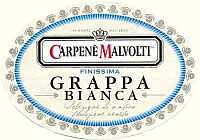
|
|
Grappa Bianca |
|
| Carpenè Malvolti (Italy) | |
| Raw matter: Pomace of white grapes | |
| Price: € 9.00 - 70cl | Score: |
| This grappa is colorless, limpid and crystalline. The nose denotes intense, clean and pleasing aromas of pear, banana, apple, peach and wistaria, with almost imperceptible alcohol pungency. The mouth is intense with perceptible alcohol pungency which tends to dissolve rapidly, good correspondence to the nose, good roundness and pleasing sweet hint. The finish is persistent with flavors of pear and peach, slight sweet hint. This grappa is produced with discontinuous steam operated alembic still. Alcohol 40%. | |
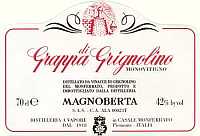
|
|
Grappa di Grignolino |
|
| Distilleria Magnoberta (Italy) | |
| Raw matter: Pomace of Grignolino | |
| Price: € 15.00 - 70cl | Score: |
| This grappa is colorless, limpid and crystalline. The nose reveals intense, clean and pleasing aromas of apple, hazelnut, raspberry, cherry and almond, with almost imperceptible alcohol pungency. The mouth is intense with perceptible alcohol pungency which tends to dissolve rapidly, good correspondence to the nose, agreeable sweet hint. The finish is persistent with flavors of raspberry, apple and almond. This grappa is produced with discontinuous distillation at very low steam pressure. Alcohol 42%. | |
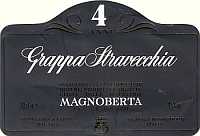
|
|
Grappa Stravecchia 4 Anni |
|
| Distilleria Magnoberta (Italy) | |
| Raw matter: Pomace of Barbera, Grignolino and Freisa | |
| Price: € 15.80 - 70cl | Score: |
| This grappa shows a pale amber yellow color, limpid and crystalline. The nose denotes intense, clean and pleasing aromas of hazelnut, licorice, vanilla, prune, black cherry and chocolate, with almost imperceptible alcohol pungency. The mouth is intense with perceptible alcohol pungency which tends to dissolve rapidly, good correspondence to the nose, pleasing roundness, balanced sweet hint. The finish is persistent with flavors of licorice, hazelnut and prune. This grappa ages for 4 years in cask and it is produced with discontinuous distillation at very low steam pressure. Alcohol 45%. | |

|
|
Grappa di Moscato di Canelli 2002 |
|
| Casa Luparia (Italy) | |
| Raw matter: Pomace of Moscato from Canelli | |
| Price: € 17.00 - 50cl | Score: |
| The grappa is colorless, limpid and crystalline. The nose denotes intense, clean, pleasing and refined aromas of grape, peach, banana, pear, candied fruit, orange, sage, white rose and apple with almost imperceptible alcohol pungency. The mouth is intense with perceptible alcohol pungency which tends to dissolve rapidly, good correspondence to the nose, agreeable and balanced sweet hints, good roundness. The finish is very persistent with flavors of grape, peach and banana. A well made grappa produced with discontinuous distillation at very low steam pressure. Alcohol 42%. | |
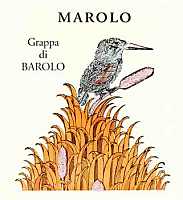
|
|
Grappa di Barolo 2001 |
|
| Distilleria Santa Teresa Marolo (Italy) | |
| Raw matter: Pomace of Barolo's Nebbiolo | |
| Price: € 30.00 - 70cl | Score: |
| This grappa shows a brilliant amber yellow color, limpid and crystalline. The nose denotes intense, clean, pleasing and refined aromas of vanilla, licorice, prune, leather, honey, cocoa, violet, hazelnut and raspberry, with almost imperceptible alcohol pungency. The mouth is intense with perceptible alcohol pungency which tends to dissolve rapidly, pleasing smoothness, good and balanced sweet hint, agreeable. The finish is persistent with flavors of hazelnut, licorice and prune. A well made grappa distilled in bainmarie discontinuous alembic still. It ages for 4 years in oak and acacia casks. Alcohol 50%. | |
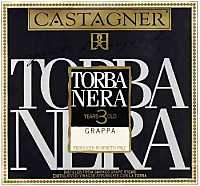
|
|
Torba Nera |
|
| Castagner (Italy) | |
| Raw matter: Pomace of Merlot, Cabernet Sauvignon, Pinot Noir and Prosecco | |
| Price: € 32.90 - 70cl | Score: |
| This grappa shows an intense amber yellow color, limpid and crystalline. The nose reveals good personality with intense, clean, pleasing and refined aromas of smoked, leather, vanilla, tobacco, licorice, chocolate, coffee, honey and hazelnut, with imperceptible alcohol pungency. The mouth is intense with perceptible although not intrusive alcohol pungency which tends to dissolve rapidly, good correspondence to the nose, pleasing smoothness, balanced sweet hint, agreeable. The finish is very persistent with long flavors of chocolate, licorice, hazelnut and coffee. A well made grappa distilled with continuous and discontinuous alembic stills and aged for 6 months in cherry wood casks and for 2 years and a half in barrique. The pomace is smoked before being distilled. Alcohol 41%. | |
Wine Parade |
|
|
| The best 15 wines according to DiWineTaste's readers. To express your best three wines send us an E-mail or fill in the form available at our WEB site. |
| Rank | Wine, Producer | |
|---|---|---|
| 1 |
| Palazzo della Torre 2000, Allegrini (Italy) |
| 2 |
| Chablis Grand Cru Les Clos 2002, Domaine Billaud-Simon (France) |
| 3 |
| Montepulciano d'Abruzzo Riparosso 2001, Illuminati (Italy) |
| 4 |
| Harmonium 2001, Firriato (Italy) |
| 5 |
| Riesling Cuvée Frédéric Emile 1999, Maison Trimbach (France) |
| 6 |
| Edizione Cinque Autoctoni 2001, Farnese (Italy) |
| 7 |
| Aglianico del Vulture La Firma 2002, Cantine del Notaio (Italy) |
| 8 |
| Amarone della Valpolicella Classico 1998, Santa Sofia (Italy) |
| 9 |
| Trento Talento Brut Riserva Methius 1998, Dorigati (Italy) |
| 10 |
| Riesling Spätlese Nierstein Brudersberg 2003, Weingut Freiherr Heyl Herrnsheim (Germany) |
| 11 |
| Jerez Fino Tio Pepe, Gonzalez Byass (Spain) |
| 12 |
| Colli Orientali del Friuli Rosazzo Bianco Terre Alte 2002, Livio Felluga (Italy) |
| 13 |
| Riesling Central Otago 2004, Felton Road (New Zealand) |
| 14 |
| Montepulciano d'Abruzzo Villa Gemma 1999, Masciarelli (Italy) |
| 15 |
| Brunello di Montalcino 1999, Castello Banfi (Italy) |
| |||||||
Privacy Policy | |||||||


| Copyright © 2002-2024 Antonello Biancalana, DiWineTaste - All rights reserved |
| All rights reserved under international copyright conventions. No part of this publication and of this WEB site may be
reproduced or utilized in any form or by any means, electronic or mechanical, without permission in writing from DiWineTaste. |